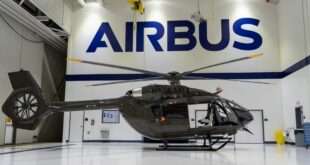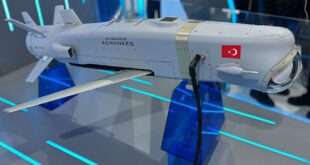Over the past year, a General Dynamics Mission Systems team supported the Public Safety Communications Research Program’s (PSCR) testing of long-range, long-term evolution (LTE) ‘boomer-cell’ technology using General Dynamics’ high-sensitivity Band Class 14 eNodeB, an integral part of the LTE network.
Test results presented by PSCR at its recent Stakeholders’ Meeting in San Diego showed that General Dynamics Mission Systems’ high-sensitivity eNodeB, used in combination with vehicle-mounted modems, successfully operated at ranges up to 67 miles (108 kilometers), which is a significant improvement compared to previous trials of the long-range technology.
"Imagine you are a first responder in a rural area with no towers nearby, or a hurricane has hit and there is no working tower within miles, how do you communicate? General Dynamics Mission Systems’ boomer-cell technology extends the effective range of operations providing first responders with the ability to relay and report critical information when infrastructure is not built, has failed or when towers are down," said Bill Weiss, vice president and general manager of Ground Systems for General Dynamics Mission Systems. "It also provides greater flexibility and economic value for public safety system designers when determining tower locations.
"We are proud to have supported Phase 2 of PSCR’s boomer-cell testing, which built upon last year’s successful Phase 1 testing to extend the demonstrated range of Band Class 14 LTE. This type of technology is critical to our first responders to ensure they have all the tools they need when they need them," said Weiss.
PSCR tested long-range operations by mounting General Dynamics’ high-sensitivity eNodeB on a tower at the U.S. Department of Commerce’s Boulder Atmospheric Observatory in Erie, Colorado.
During the test, user equipment operated at two power levels – a standard 23dBm modem and a 31dBm vehicle modem. Testing of the vehicle modems occurred at extended range in the northerly and easterly directions. The test took place during the fourth quarter of 2014 and first quarter of 2015.
Long-range operation is an important technical requirement for FirstNet’s National Public Safety Broadband Network. Long-range operation decreases operations expense and provides more coverage, capacity, and capability for public safety users.
General Dynamics Mission Systems has worked with the PSCR for several years in support of public safety communications technology development and previously completed PSCR’s Phase 1/3 LTE interoperability testing program in 2013. This test was important as it demonstrated technical interoperability of other major vendors’ LTE core, Radio Access Network, and User Equipment technology with that of General Dynamics. More information about General Dynamics Mission Systems’ public safety technology is available at the General Dynamics Public Safety and FirstNet website.
PSCR is a joint program of the National Telecommunications and Information Administration’s Institute for Telecommunications Sciences and the National Institute of Standards and Technology’s Communications Technology Laboratory.
 Defense Arabia Defense Arabia is your source for the latest news on defense, national security and analysis in the Middle East.
Defense Arabia Defense Arabia is your source for the latest news on defense, national security and analysis in the Middle East.



